Cactus are the easiest plants to rear, and so are the spooky Ming Thing Cactus.
They are a unique addition to your cactus collection that will amaze you with their attractive appearance.
I am a plant enthusiast and like tending all kinds of plants. And last week, I added a new member to the group, the Ming Thing Cactus.
Like most cacti, Ming Thing cactus are low maintenance and hardy.
However, some caring requirements must be followed carefully to make your Ming Thing happy.
Ming Thing Cactus thrives on a well-draining cactus soil mix with watering once a week. The Ming Thing can handle some shade and dappled sunlight, but not damp weather or frost. Fertilize the cactus with a diluted fertilizer in the spring and summer, and place it in direct sunlight for at least 2-3 hours.
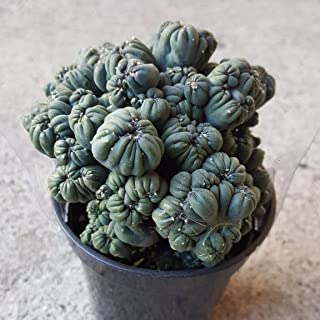
In this article, I will describe everything that needed to be done to care for the Ming Thing perfectly.
Read the article to know more about this strange-looking cactus.
Table of Contents
- Overview of Ming Thing Cactus
- A Complete Guide to Care for Ming Thing Cactus for Beginners
- 1. Light and Location Requirement
- 2. Proper Watering
- 3. Ideal Temperature
- 4. Maintain Low Humidity
- 5. Proper Soil Mix
- 6. Proper Fertilization
- 7. Growth Habits
- 8. Flowering Habits
- 9. Common Pests and Insects
- 10. Common Diseases
- 11. Methods of Propagation
- 12. Appropriate Pot for Ming Thing
- 13. Repotting Ming Thing
- 13. Frequent Pruning
- FAQs About Ming Thing Cactus
- Conclusion
Overview of Ming Thing Cactus
Ming Thing Cactus is an oddly shaped cactus that grows up to 6 feet (2 m) tall outdoors in its native growing environment.
This cactus exhibits a naturally occurring mutant growth with random growth points all over the body.
As a result, it has a club-like lumpy and asymmetrical shape.
Moreover, the Ming Thing cactus is dark blue-green, has short black spines and woolly areoles.
It may occasionally bloom with beautiful white flowers.
Here is a table with the essential details about Ming Thing Cactus:
| Scientific Name | Cereus forbesii monstrose |
|---|---|
| Family | Cactaceae |
| Origin | Bolivia and Argentina |
| USDA | Zone 9- 11 |
| Nature | Succulent |
| Life Cycle | Perennial |
| Growing season | Spring and summer seasons |
| Average Plant Height | 30 cm (12 inches tall) |
| Average Plant Width | 60 cm (24 inches wide) |
A Complete Guide to Care for Ming Thing Cactus for Beginners
As long as its basic requirements are met, ming thing needs very little attention.
Therefore, it is easy for anyone to satisfy their green thumb.
Below are the requirements to take care of your spooky little plant.
| Tips for caring Ming Thing Cactus | Ideal Conditions |
|---|---|
| Watering | Once in a or two weeks in summer. Once in a month in winter. |
| Temperature | 70°F to 80°F (21°C to 27°C). |
| Humidity | 40-50% Relative Humidity |
| Light and Location | Filtered sunlight with 2-3 hours of direct sun. |
| Soil | Well draining with coarse sand and pumice. Use cactus soil mix. |
| Fertilizer | Slow release fertilizers |
| Bloom | Spring season |
| Pot | Shallow ceramic or plastic pots with 1-3 drainage holes. |
| Pest | Mealybugs, Fungal gnats, spider mites, and scales. |
| Disease | Stem and root rot. |
| Propagation | With offsets or seeds. |
| Toxicity | Not Toxic |
1. Light and Location Requirement
Even though the Ming thing is a cactus, it has much less light requirement than most cactus species.
As a result, Ming Thing grows well on dappled or partial sunlight.
Don’t place your cacti in direct sunlight for the whole day.
However, select a spot with at least 2-3 hrs of direct sunlight to make it thrive.
Tips for Maintaining Proper Lighting and Location
- Place your Ming Thing near the east-facing window to provide it with enough sunlight.
- However, don’t place it near the window if the room receives direct sunlight for more than 4-5 hrs in a day.
- Place your cactus on a shelf near a window if the room is bright.
- You can create a partial shade with the help of a sheer curtain or canopy above the plant.
- Hang the growth light if you place the plant in the darkroom.
- Depending on how dark the space is, use the plant lights for at least 12 hours but no more than 16 hours every day.

2. Proper Watering
Being a plant from the cactus family, Ming Thing requires very less water to live.
Therefore, the cactus best like slightly deprived watering conditions.
Hence, you can water your Ming Thing only once every two weeks in the summer and spring seasons while it can go up to a month during winter.
Prolonged wet soil is not tolerated by the cactus and can get infected with fungal diseases like root rot.
Hence, it is better to underwater your cacti than overwatering it.
The body of the Ming Thing cactus is succulent and stores a lot of water.
Therefore even sprinkles of water can be sufficient for your plant to quench its thirst.

Tips for Proper Watering
- Use a pot with drainage holes and allow the excess water to run off completely from the holes.
- Empty the drip tray regularly, as Ming Thing should not stay in water for a long time.
- Let the potting mix dry completely between the watering sessions.
- Always use a well-aerated and draining potting mix so that the dirt does not hold too much water.
- Never place your pot in the kitchen or the bathroom, as these places are naturally more humid, making it easy to overwater your cacti unknowingly.
- Always check the potting mix for dryness before watering the cactus.
3. Ideal Temperature
Being a desert plant, the cactus loves warm temperatures.
The Ming Thing cactus enjoys the day temperature of 70°F to 80°F (21°C to 27°C).
Besides, lower temperatures during the daytime can be a deal-breaker for the cacti.
Therefore, if your plant is located outside, don’t forget to bring it indoors during the winter season. Unfortunately, it also doesn’t tolerate frost.
Further, Ming Thing can tolerate a much lower night temperature of about 50°F (10°C).
Tips to Maintain Ideal Temperature
- Air conditioners during the summer season and heaters during the winter season are ideal for maintaining the required temperature.
- However, don’t place the cacti very near the air conditioner and heater.
- During the winter season, transfer the plant indoors and don’t use cold water while watering the cacti.
- Don’t place the plant near single pan windows during the winter season.
- Bring your Ming Thing inside the house when the temperature drops at night.
- Avoid exposing your plants to cold drafts.
4. Maintain Low Humidity
Ming Thing cactus doesn’t tolerate humid conditions but thrives on the low humid conditions.
The optimum humidity requirement of Ming Thing is 40- 50%.
High humidity may cause Ming Thing to be infected by fungal diseases like root or stem rot.
Moreover, it is very easy to overwater your plant in humid conditions.
The most easily seen sign of high humidity conditions is the presence of molds on the stem and stem rots.

Tips to Maintain Low Humidity
- Don’t place your cacti in the kitchen or bathroom, where the humidity is naturally high.
- Also, don’t place your plant very near to the humidifier.
- Occasional misting is good for your cacti; however, don’t overdo it.
- You can use a hygrometer to check the humidity of different locations of your home before deciding on a place for your plant.
- You can use a Dehumidifier if the humidity in your home is high to maintain the ideal condition.
- Group other houseplants with your Ming Thing Cactus to increase humidity.
- However, if the humidity is excessive, avoid watering for some time until the soil gets dry.
5. Proper Soil Mix
Proper soil mix is most important for a house plant as its roots are restricted in a pot.
Soil mix for cactus should have the following properties to provide the ideal condition for its growth.
Ming Thing Cactus needs cactus-mix soil, which is well-draining and well-aerated soil with pH between 5.0 and 7.0.
| Soil Properties | Importance |
|---|---|
| Well Aerated | For undisturbed growth of roots. |
| Constitute Organic matter | Slow releasing feed for cacti. |
| Well Draining | To prevent water logging condition which can be detrimental to the cacti. |
| pH | 5-7 |
You can easily buy soil mix for the cactus from nurseries or stores which are balanced to ensure the proper growth of cacti.
Some recommendations for potting mix for the Ming Thing cactus, which you can easily find on Amazon, are:
- Hoffman 10410 Organic Cactus and Succulent Mix
- Miracle-Gro Cactus, Palm, and Citrus Potting Mix
- 8 Quarts xGarden Cactus and Succulent Soil Mix
- Espoma CA4 4-Quart Organic Cactus Mix
- Succulent & Cactus Soil Mix – Premium Pre-Mixed Fast Draining Blend (1.25 Dry Quarts)
To get instant soil mix, you can simply use peat and perlite in equal parts.

However, you can also make your potting mix ideal for cactus at home by using the following ingredients:
- Three parts regular garden soil
- Three parts sand
- Two parts perlite, gravel, grit, or crushed granite
The best combination for the cactus soil mix is 20% clay, 40% silt, and 40% sand.
The right ingredients in the right proportion are essential to achieve desired compactness, aeration, and drainage.
Note: 40–50% organic matter in 50–60% inorganic matter is the desired mix for cactus to balance nutrient and good drainage.
6. Proper Fertilization
Being a desert plant, cacti are used to low fertilizer conditions, so they don’t need much fertilization even when grown at human care.
Fertilize your Ming Thing cacti every two weeks during its active growing and blooming period, i.e., summer and spring seasons.
Besides, it is not necessary to feed your cacti. Do not fertilize your cacti during winter, and apply only a small amount while fertilizing only once a month.
Moreover, adding some organic matter like compost or mulch to the potting mix while repotting also fulfills the fertilizer need of the plant as it decomposes slowly.

Tips for Proper Fertilization
- Feed your cacti regularly while the plant is still young.
- You can add slow-release fertilizers while repotting.
- Water the soil thoroughly and dry it completely after adding the feed to the pot.
- You can use a fertilizer with an NPK ratio of 10-10-10 or 5-10-10. Fertilizer should be diluted to half its strength to see the best results.
- Compost manure or vermicompost is the best organic fertilizer for Ming thing cactus.
Overfertilizing the Ming Thing makes it vulnerable to pests and diseases, while under fertilizing is less detrimental.
So, it is better not to add fertilizer if you think potting mix already contains some feed.
Some best fertilizers for feeding Ming Thing cactus are:
| Fertilizer | Feature |
|---|---|
| Miracle-Gro Succulent Plant Food | 1. Feed ratio : 0.5-1-1 2. As it has low N-P-K ratio, it has lower burning effect on the leaves even if it is spilled. |
| Succulent Fertilizer | 1. Liquid Fertilizer. 2. It can be easily diluted by adding water to use in low concentration. |
| Miracle-Gro Indoor Plant Food Spikes | 1. Slow- release fertilizer. 2. You can simply push the spikes inside soil and they release nutrients slowly. |
| Succulents & Cactus Plant Food | 1. Slow release fertilizer and granular in formulation. 2. Release fertilizer every time you water your plant. |
7. Growth Habits
The “Montrose” on the scientific name of Ming Thing means random growth points all over the body.
This feature creates a strange mutant growth structure of the plant. It has lumpy and club-like stems with short black spines and woolly areoles.
The structure of stems is sometimes referred to be as clenched fists.
The growth of Ming Thing is slow and grows up to a height of about 12 inches (30cm) and 6 inches to 12 inches (15 cm to 30cm) wide.
However, it can grow much larger outdoors, up to 6 feet (2m) in height.
If you want vigorous growth of your Ming thing indoors,
- Provide it with proper watering and lighting conditions.
- Check for the diseases and trim the diseased parts as soon as you can see them.
- Repot the cacti at least once in two years.
8. Flowering Habits
Ming Thing produces large and beautiful white flowers with a tint of pink or purple color after they mature.
Flowers are funnel in shape, 25 cm in diameter, and bloom at night.
During the winter season, Ming Thing goes dormant, and it is necessary not to overfeed the cacti during this period to have it bloom in the spring season.
However, it is not easy to get your cacti to bloom, as it requires perfect growing conditions throughout the year to flower.
The most important thing to follow to have your Ming thing bloom in the summer are:
- Provide proper temperature, humidity, fertilizer, and adequate water as recommended in the summer and spring seasons.
- During the winter season, don’t feed your cacti at all. However, water it every once in 3-4 weeks.
9. Common Pests and Insects
Cacti don’t home many pests, but sometimes they might get infected.
Common pests affecting Ming Thing cactus are spider mites, fungal gnats, scale insects, and mealybugs.
Pests attack Ming Thing if it is weak due to inadequate watering and feeding habits.
So make sure to correctly care for your plant to keep it safe from pests.
| Name of Pests | Symptoms |
|---|---|
| Mealy Bugs | Fallen needles. White secretion on plant body. Tiny dots on the body of cacti. |
| Spider mites | Spidery web around the cactus. Small brown spots. |
| Fungus Gnats | Small black flies roaming around plant. |
| Scale Insects | Plant covered with Clusters of flat, circular, gray bumps. Yellow or brown spots on cactus body. |
Solutions
- Pick or wipe off the insects when the number of pests affecting plants is small. You can use rubbing alcohol while wiping off.
- Spray neem oil if the infestation is high.
- Always use clean and pest-free potting mix and propagation materials.
- You can treat Spider mites and mealybugs with a strong water spray, but don’t forget to cover the soil to prevent overwatering.
- Use a yellow sticky trap to control the fungus gnats.
Preventive Measures
- You should always check and quarantine the plant before bringing a new plant to your collection.
- Inadequate growing conditions make the cactus weak, creating a favorable condition for pests to attack. Hence, keep your cactus healthy to prevent infestation.
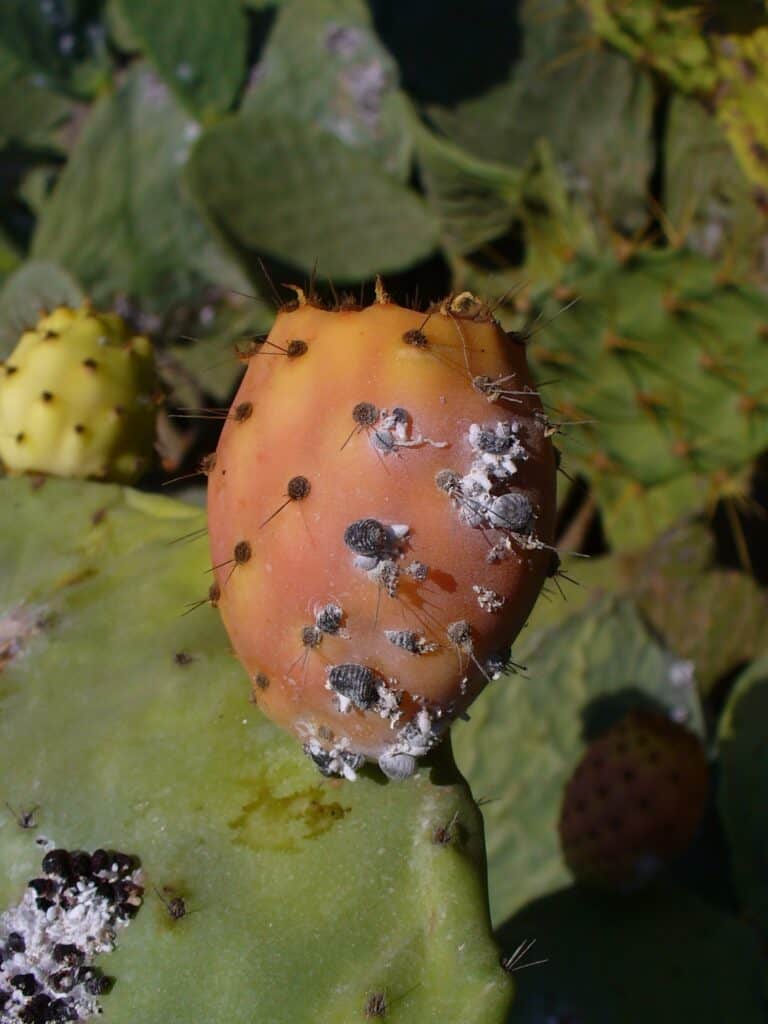
10. Common Diseases
The most common diseases affecting the Ming Thing are fungal and bacterial rot.
The main reason for rot in cacti is overwatering and high humidity.
Rot affects the stem and roots of the cactus.
As a result, the plant may become brown with black spots around the base, and roots are black or brown with a mushy appearance.
The first symptom of rotting can be detected as the top of the cactus begin to become yellow.
The causative organisms for fungal rot of Ming Thing cacti are Fusarium oxyporum and Pythium aphanidermatum, while bacterial rot is caused by Erwinia amylovora.
Solutions for Rot in Ming Thing cactus
- At first, stop watering the plant and carefully remove the cacti from the pot.
- Don’t forget to wear gloves to prevent wounds from pricking by the thorns.
- Then, carefully remove all the soil from the root ball and expose the root to see the affected roots.
- Now with the help of scissors or pruners, trim the roots that are black, brown, or mushy.
- Also, for stem rot, prune and remove infected stems.
- Dust the remaining roots and stem with sulfur and keep the cacti with its roots exposed to air for 1-4 days till a scab is formed on the cut parts.
- Finally, fill a new pot with fresh potting mix and plant your cacti.
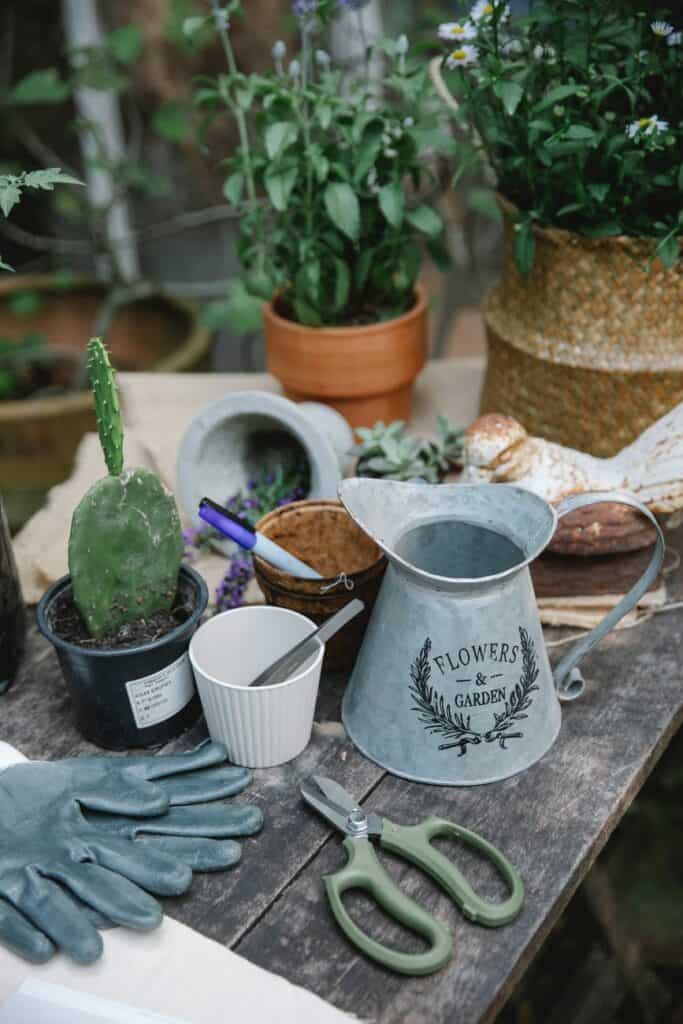
However, if all the roots are infected, it isn’t easy to revive the same plant in the case of root rot.
So, discard the plant and potting mix and plant a new healthy cactus instead.
Preventive Measures
- Do not overwater the plant and maintain proper drainage.
- Do not place the plant in very humid conditions like the kitchen, bathroom, and near the humidifier.
- Add a layer of small pumice to the bottom of the container.
- Provide some space between the plants to allow airflow.
- Replace the plant after treating the soil if the plant gets infected.
11. Methods of Propagation
Ming Thing Cactus can be easily propagated by seeds and offsets (babies around the main plant).
The ideal time to propagate is from early spring to late summer.
Seeds take longer to germinate and require a great deal of patience and care.
The offset approach is what I like to adopt. Offsets or cuttings from the main plant can be collected and replanted.
You may make a lot of spooky monster plants’ this way, which you can present as gifts to family and friends.
Propagation Via Offset Division
After the Ming Thing has matured, it produces many baby cactus in clusters called offsets.
These offsets can be removed from the main plant and transferred to another pot for multiplying your cactus.
Steps: 1: As safety comes first, always wear thick gloves while handling cactus to prevent prickling by its thorns.
Step 2: Now, take a sharp and sterilized knife and remove the offsets carefully. Cut and separate by carefully pulling them out.
Step 3: Then, place the separated offsets in an open and shady space for 3-7 days. This will develop a callus on the wound.
Step 4: Take a separate pot and fill with fresh Cactus potting mix.
Step 5: Now, plant the offset and water well and place in a warm location until new roots appear.
Also watch,
Propagation Via Seeds
Ming Thing produces seeds following the bloom in the spring. These seeds can be used to multiply the plant.
Since ming thing rarely blooms indoors, it isn’t easy to get seeds to propagate.
However, if you are lucky enough and your cacti have bloomed, then collect its seeds, and follow the following steps:
Step 1: Fill the tray with Cactus Potting mix. Fill the bottom tray halfway with water, then place the segmented tray within and wait for the mix to absorb the water.
Step 2: Now, place one seed in each small cup while the soil is damp, then cover the top of the tray with sand and give it a thorough soaking with a spray bottle.
Step 3: Provide an adequate temperature of not less than 21°C (69.8°F) and full sunlight with frequent watering. Seeds will germinate after few weeks and produce baby ming thing sprouts.
Step 4: After 2-3 weeks, you can transfer these babies to a new pot with fresh potting mix.

You may also want to read about Step by Step guidelines to Propagate Orchid Cactus.
12. Appropriate Pot for Ming Thing
Ceramic terracotta and glazed ceramic pots with 1-3 drainage holes are the best pots for growing Ming Thing cactus.
One of the cacti species, Ming Thing Cactus prefers clay pots with multiple drainage holes.
The pots with 12X 6 X 12 inches diameter can be best for Ming Thing Cactus. These pots allow good drainage to the plant and help prevent rot.
Moreover, pots made of plastic and cement with proper drain holes can be used.
However, avoid using glass or metal pots as they don’t have drainage facilities and get easily heated.
Correct size, material, and drainage holes are the most important features to look after while selecting a pot.
Tips for Choosing the Perfect Pot
- The optimal pot size has a 14-inch gap between the cactus’ main body and the pot’s rim.
- Check the cactus’ width and select a pot that is just 10% wider than the plant. For example, if a plant’s width is 3 inches, choose a 3.5 inches wide container.
- As cactus have shallow roots, do not select a deep pot as such pots will hold more water and cause root rot.
- Big pots cause overwatering of cacti, and small pots constrain the root growth.
Hence, correct-sized pots are crucial for the good health of cacti.
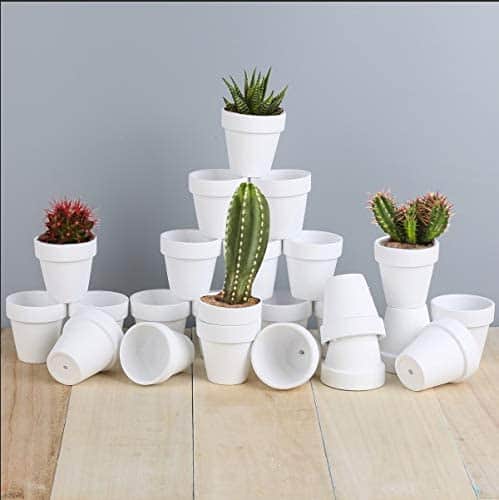
You can buy these cute Ceramic Terracotta pots on Amazon.
13. Repotting Ming Thing
Repotting cactus regularly is important to keep them healthy and long-lived.
It means transferring the plant from one pot to another. Repot your Ming Thing at least once in two years.
Signs your Ming Thing Needs Repotting
- If it grows larger for a pot
- If the pot becomes root-bound
- When the pot is filled with many small baby cacti
- When the plant becomes infected by rotting
Guide for Repotting Ming Thing Cactus
Step 1: At first, select a pot slightly larger than the older one, i.e., an inch or two higher in diameter.
Step 2: Now, place a layer of porous material like a coffee filter to cover the drainage hole and prevent soil leakage while filling.
Step 3: Then, fill the pot with some fresh cactus potting mix.
Step 4: Now, loosen up the soil with a gardening tool or a blunt knife and remove the cacti carefully from the old pot.
Step 5: Untangle the tangled roots and cut excess roots or root balls.
Step 6: Now, plant the cacti in a new container.
Step 7: Finally, water your plant and place it in a place with bright sunlight.
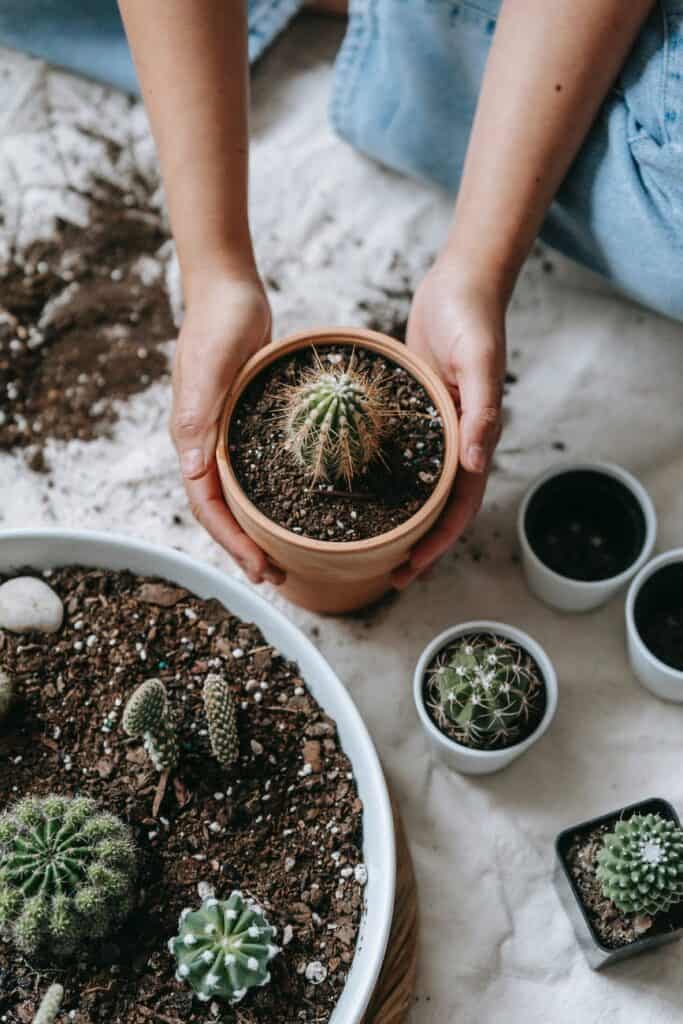
13. Frequent Pruning
Cacti are not generally need pruning. However, pruning is the best and easiest solution for the rotting disease.
You can simply cut off the diseased part to treat and make the plant healthy again.
However, this works best when the cactus is affected on some parts only.
Besides, you can also prune off the spines to make your cacti safe around pets and children.
Also, you can prune the stems of Ming Thing to keep it on the desired size without letting it grow.
Tips for Pruning Ming Thing
- Keep an eagles’ eye on the rotting symptoms and prune the diseased part as soon as you notice it.
- Youlightprune the root balls and very long roots while repotting the cactus.
- Prune and detach the offsets to prevent the container from being overcrowded.
- Don’t forget to wear thick gloves while pruning your cacti.
- Always use disinfected tools for pruning.
Read more on Why is my Cactus Shriveling Up and Wrinkling?
FAQs About Ming Thing Cactus
1. Why is my Ming Thing Cactus Looking Brown?
Ming Thing cactus becomes brown mainly due to two reasons, overwatering and high humidity.
Browning in cactus is the symptom of rot, which is detrimental to plant if it is not treated on time.
Placing your cactus in a high humid environment, bad soil mix which lacks drainage, high frequency of watering, and lack of drainage on pot may cause your Ming Thing to brown.
Maintaining the optimum conditions for watering, light, and humidity will help prevent browning on the cactus.
2. When should I Plant Ming Thing Cactus?
The best time for planting a Ming Thing cactus is early to late summer.
Summer is the active growing period for Ming Thing, so, at this time, it responds well to stress and rejuvenates fast.
Plant cacti in partial shade with direct sunlight only in the morning and early afternoon.
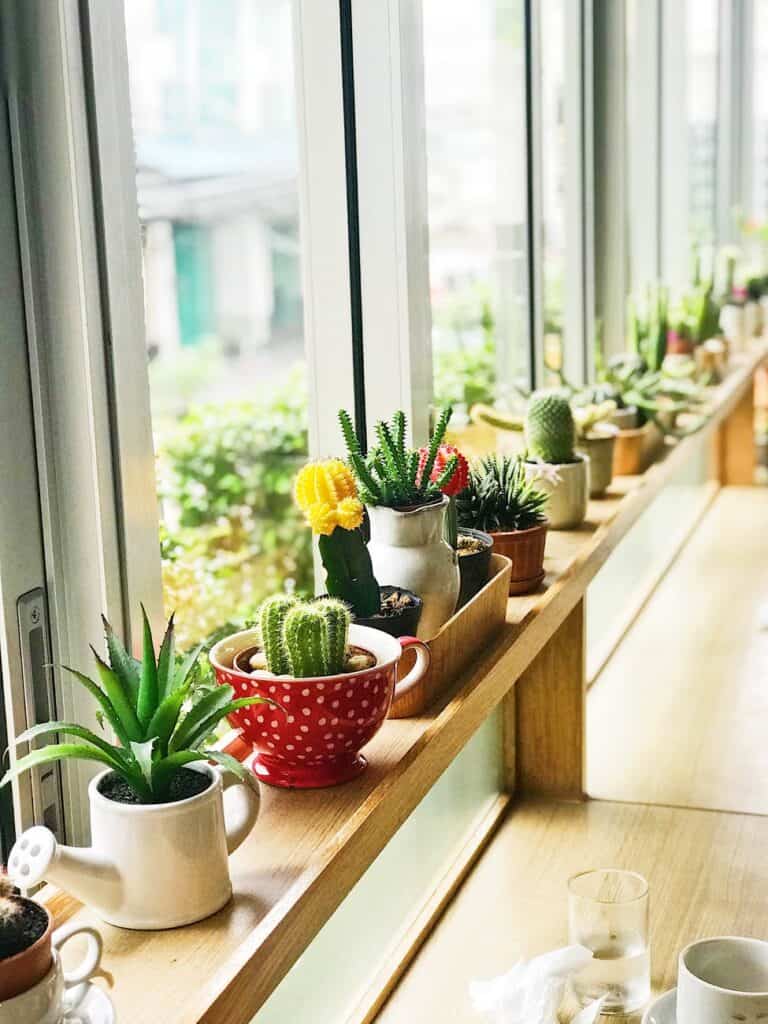
Conclusion
Ming Thing cactus are interesting and vibrant to be incorporated in your indoors.
They are easy to grow and need minimum attention, making them your best plant friend.
Moreover, they are small and grow slowly, making them perfect for small spaces.
These spooky cactus will compensate for your plant collection and will surely be an eye-catcher for a plant lover.



